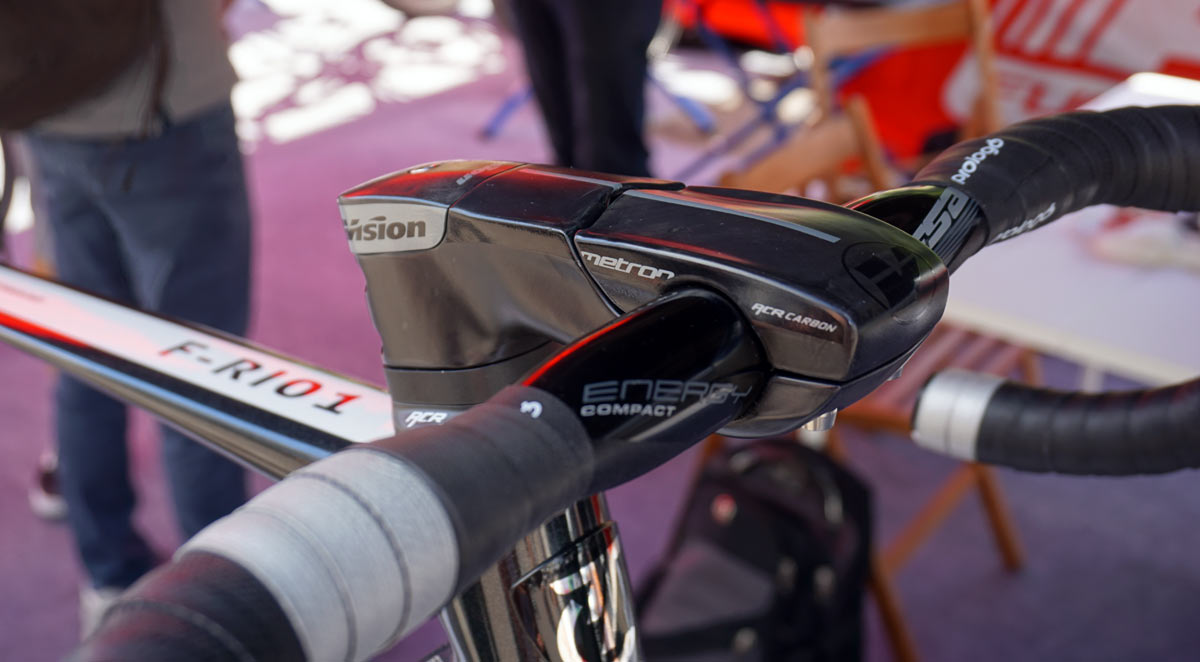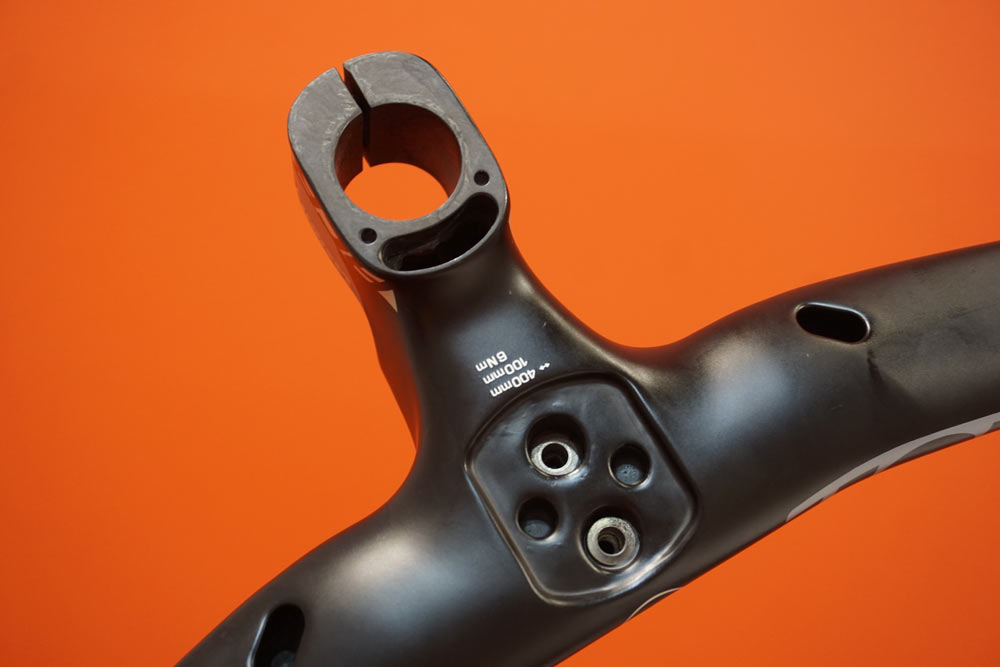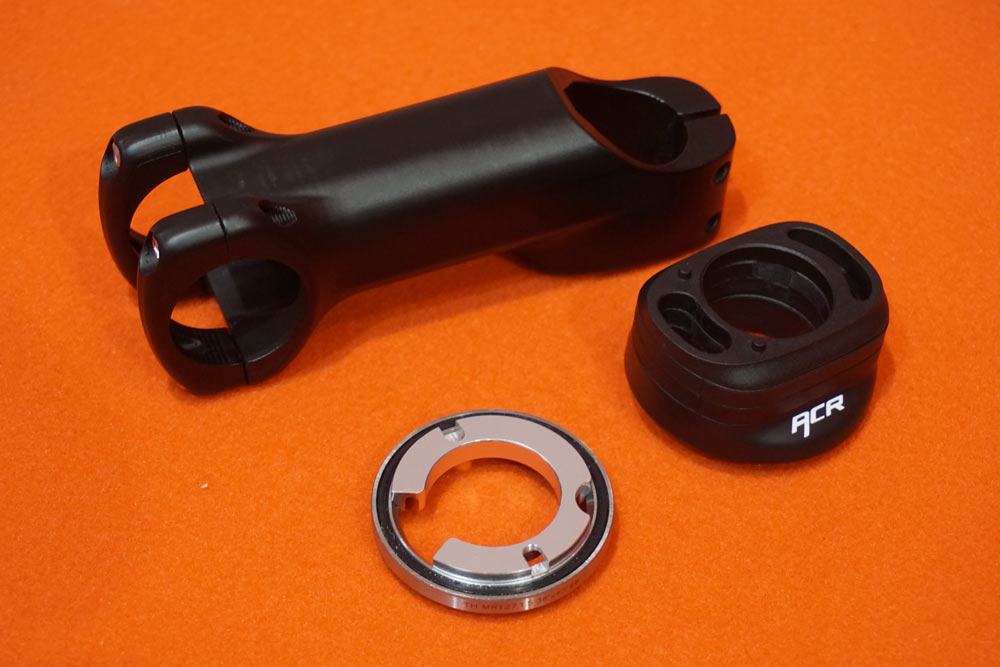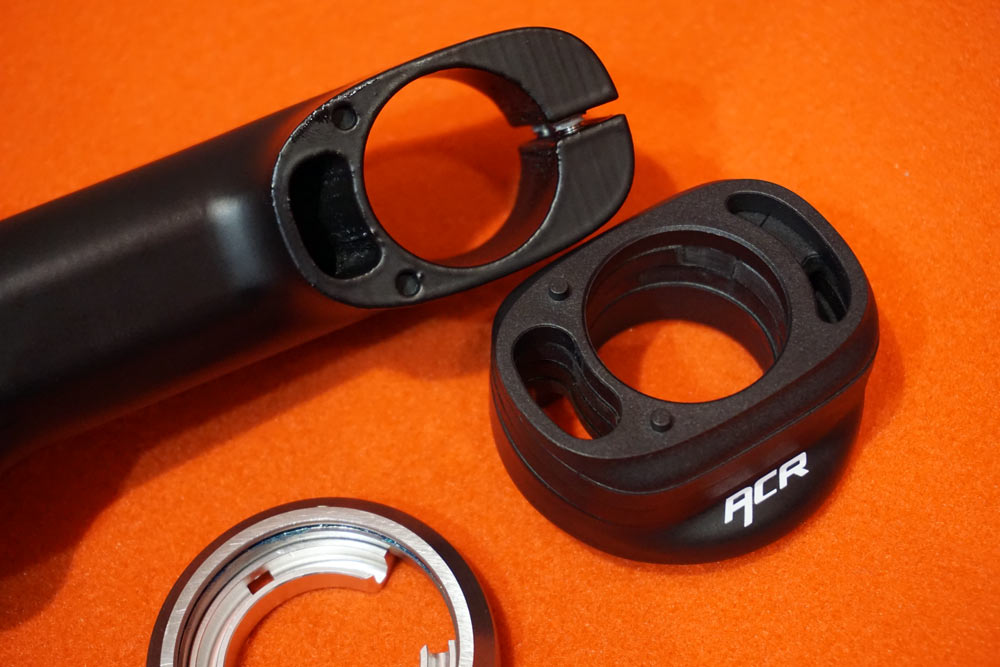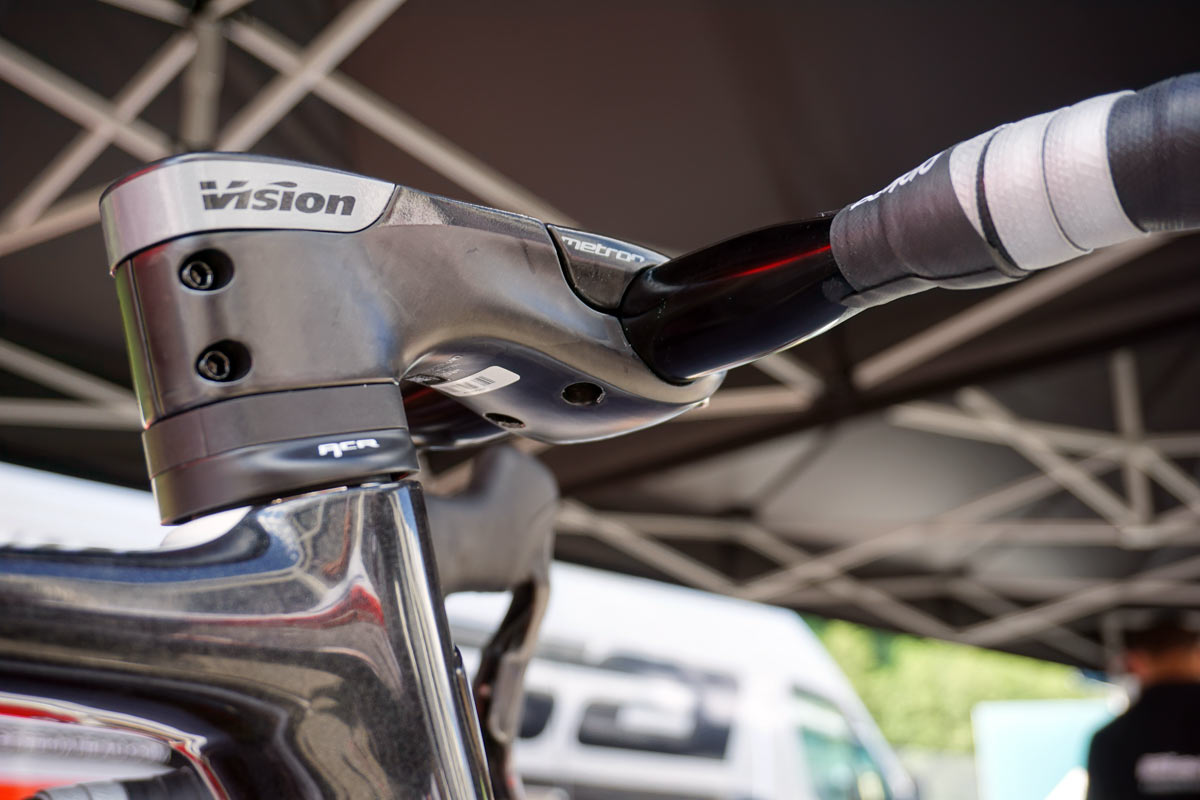Prior to this year’s Tour de France kicking off, we saw a deluge of new aero bikes from Trek, Specialized, Cannondale, Ridley and Merida, and many had something in common: Aero cockpits with hidden cables. Something else they had in common? Big R&D budgets to develop their own stealth cockpit components and frames. See, that type of integration usually requires the frame, fork, handlebar and stem to all be designed to work together.
So what’s a smaller bike brand to do if they want to keep up? Soon, the answer will be to call Full Speed Ahead…
Shown at the top of the post is more polished prototype created for Italian frame brand Titici that runs the shift cables and brake hose into the bottom of the front of the stem and directly into the frame. The model shown directly above shows where everything goes, using a separate channel to feed everything into the frame.
To make it work, it needs a special upper headset cup built into the top tube that allows for a wider bearing. The fork’s steerer tube is still a normal 1-1/8″, but the expansion wedge for the headset leaves a gap for the cables to run through. Any spacers and headset cap would be designed with the same channels in them. As shown, it would require you to undo any cable in order to change the stack, but Trek found a simple solution to this for the new Madone and likely something similar could be implemented here.
Using this system does mean the frame manufacturer has to implement the design into the frame from the outset. Which only expands the option to use this system without limiting the use of standard bars and stems so long as there were other ways of getting the cables from point A to B. Or if other bar/stem brands latch on and start offering something similar.
The end result is an exceptionally clean looking front end that eliminates extra holes in the head tube, which could mean lighter, stiffer and/or stronger frames. That’s the reason Simplon did it on their new hardtail mountain bike, and it looks sweet.
